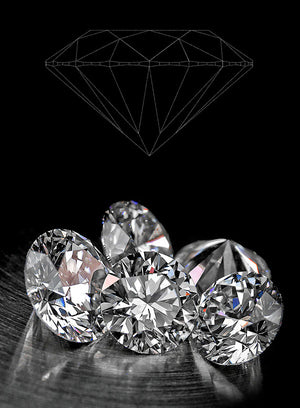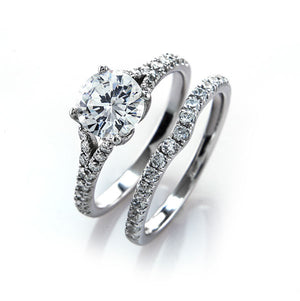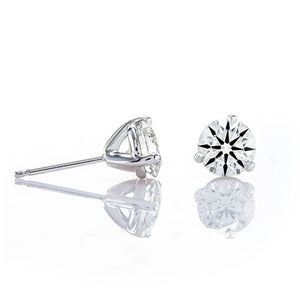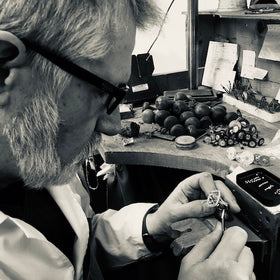What do the different colors of an ASET mean?
Before I explain what the different colors of an ASET image mean, let's talk about what an ASET is and why it is an integral part of the diamond selection process at Brian Gavin Diamonds.
ASET is an abbreviation for Angular Spectrum Evaluation Technology, which was developed by the American Gemological Society Laboratory (AGSL) to determine how efficiently, or inefficiently, a diamond is handling light.
According to José Sasián, Ph.D., Optical Physicist for the University of Arizona, “Angular spectrum refers to the set of ray angle that can make a gem’s facet bright” but what you really need to know is how to interpret the information quickly and without becoming an expert in the optical properties of diamond design.
The AGS Laboratory includes an ASET scan as part of their Proprietary Light Performance Diamond Quality Document, which we use as the grading platform for all of the Brian Gavin Signature Diamonds and Brian Gavin Blue Diamonds.
In addition, we provide photographs for every diamond in our inventory, as seen through an ASET Scope, on the diamond details page.
Using ASET to Measure Evaluate & Contrast:

ASET images are comprised of the three colors, red, green, and blue, and the tones black and white. Diamonds with exceptional optical symmetry will exhibit these colors in consistent patterns throughout the diamond. Diamonds which are cut less precise, will exhibit patterns of colors which are more scattered and sporadic in appearance.
As you can see by the image to the left, which shows Brian Gavin using a handheld ASET Scope, the scope consists of three colored sections. Each section represents a different range of light, as would be available to a diamond across the sky or in the average room.
What the Different Colors of an ASET mean:
The color red represents light which is striking the diamond from 45° up to perpendicular with the table facet, this is the brightest light which makes the diamond brilliant. The more red that you see in a diamond, the brighter it is going to appear, however it is equally as important to have green and blue sections as well.
 The color green represents light which is not as bright, it strikes the diamond from 45° out to the horizon, however note that it is completely normal for the center region of the table facet to be red, green or a combination thereof because they both share the 45° factor, because they are connecting at that point on the ASET Scope. Therefore it is quite common to see either red, green, or a combination thereof within the center of the table facet in the ASET images, which is green in the image provided to the left.
The color green represents light which is not as bright, it strikes the diamond from 45° out to the horizon, however note that it is completely normal for the center region of the table facet to be red, green or a combination thereof because they both share the 45° factor, because they are connecting at that point on the ASET Scope. Therefore it is quite common to see either red, green, or a combination thereof within the center of the table facet in the ASET images, which is green in the image provided to the left.
The color blue represents contrast which is what enables our eyes to see, this is light which could have entered the diamond, but which is being blocked by our heads (or a camera lens) as we observe the diamond. The eight pointed star pattern which is visible in photographs of Brian Gavin Signature Hearts and Arrows Diamonds is a reflection of the eight pavilion main facets which are part of the lower half of the diamond.
Black and White represents leakage which is present in all diamonds to some extent, whether the leakage appears as black or white depends on the lighting environment being used. All diamonds exhibit some degree of light leakage, however diamonds which are poorly cut will exhibit considerably more than diamonds which exhibit superior levels of optical symmetry, like the diamonds in our Signature and Blue collections.
















